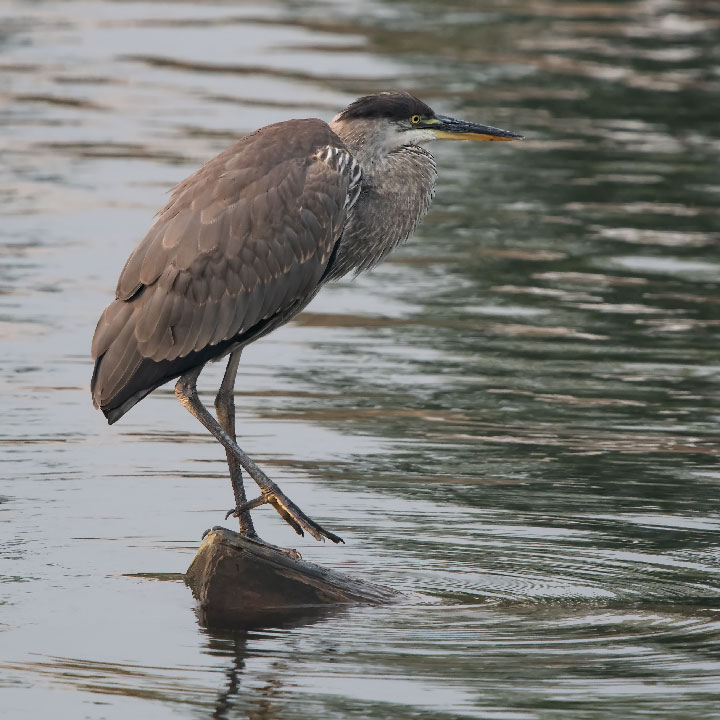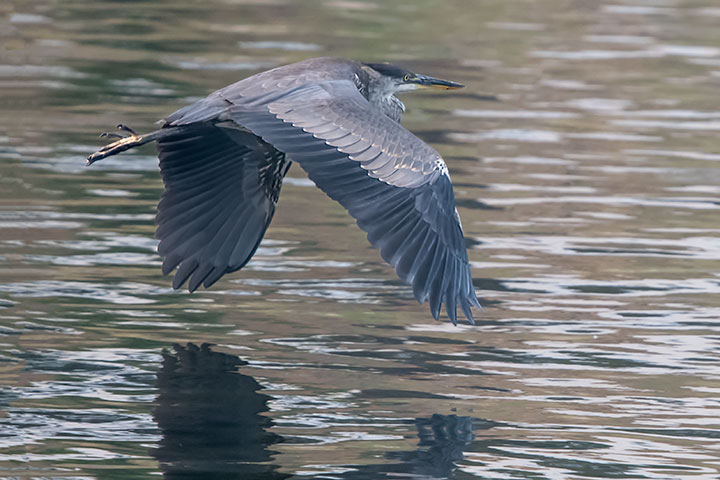This is the time to see juvenile birds. Although as large as adults, they often look somewhat different.
Today, I saw a juvenile Great Blue Heron standing on a deadhead. The signs were clear that it was this year’s chick.
This Great Blue Heron hatched this summer. It lacks: the pigtail on the back of its head, a white crown, long shaggy neck feathers. And it has a well developed yellow patch in front of its eye.

This is the same bird flying off. Yet, its colour seems different. The hues here are closer to what would be considered correct for the bird. The previous shot was strongly influenced by yellowish light transmitted through a pall of smoke from distant forest fires.


I and other Kaslovians have been seeing up to 5 Juveniles commonly around Kaslo Bay and the Kaslo River mouth.
There is an active rookery in the Balfour area that seems to be supporting the population upswing. I have a new juvenile in my bay downstream of the Harrop ferry crossing.
I have noticed size is also a factor in ID of a juvenile, Alistair. They are noticeably smaller, at least for now.
Lovely photos Alistair!
Thanks for this, Alistair, it takes me back 30 years to our time at Shalalth on Seton Lake (between Lillooet & Seton Portage in the southern BC Interior) One Great Blue visited every summer by himself. I wrote a story about him saying his wife preferred to stay home in Florida.
We had a 60 ft wharf that enclosed a swimming area off the front of our house. A beaver made his home under the wharf and they seemed to be pals. The heron spent time on our chimney — this was in the 80’s and the Archie Bunker TV show was running — so we, of course, called him Archie– at least the beaver, in my story, named him and told his story.
Thanks for the memory, Alistair.
One of my favourite birds. Thanks again for sharing your passion with us.